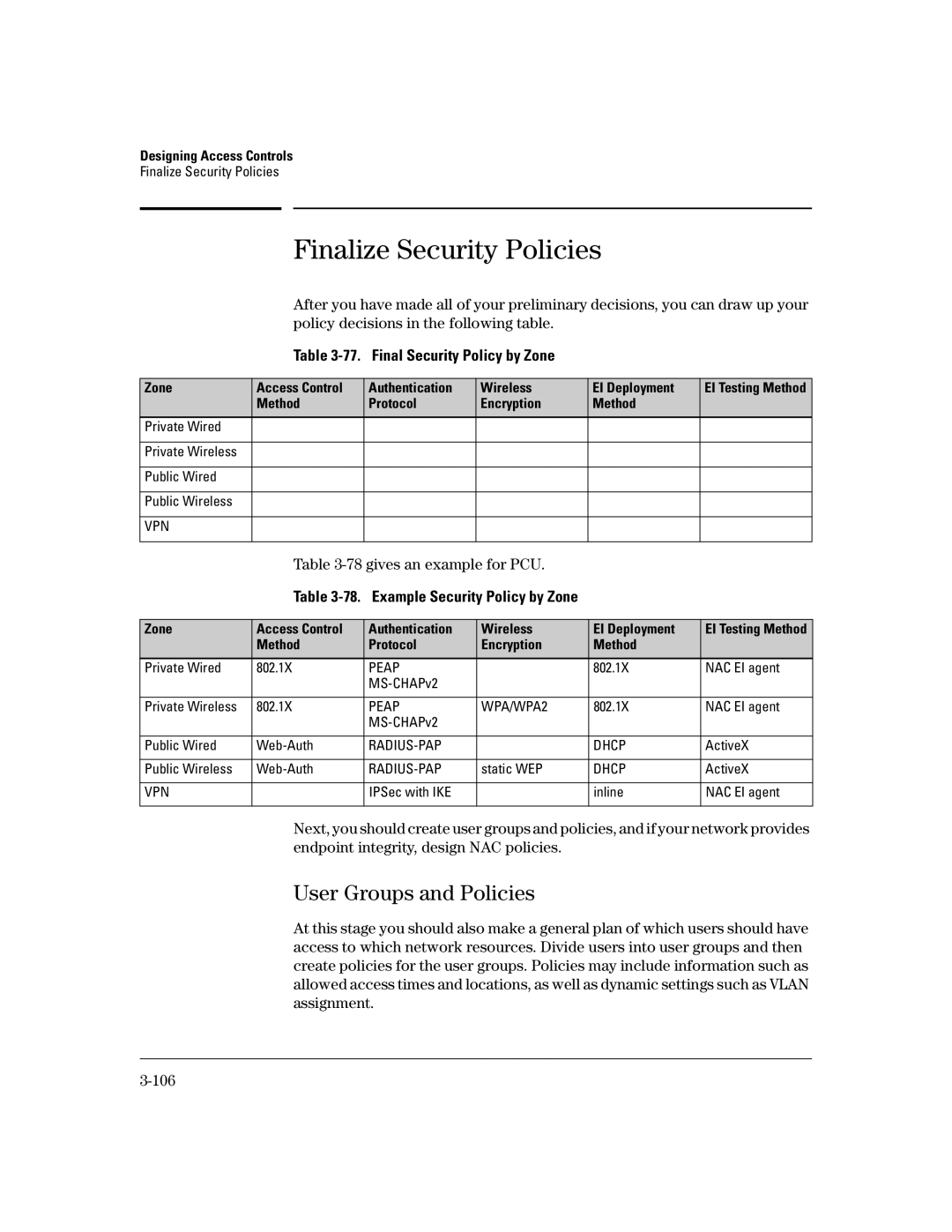
Designing Access Controls
Finalize Security Policies
Finalize Security Policies
After you have made all of your preliminary decisions, you can draw up your policy decisions in the following table.
Table 3-77. Final Security Policy by Zone
Zone | Access Control | Authentication | Wireless | EI Deployment | EI Testing Method |
| Method | Protocol | Encryption | Method |
|
|
|
|
|
|
|
Private Wired
Private Wireless
Public Wired
Public Wireless
VPN
Table
Table 3-78. Example Security Policy by Zone
Zone | Access Control | Authentication | Wireless | EI Deployment | EI Testing Method |
| Method | Protocol | Encryption | Method |
|
|
|
|
|
|
|
Private Wired | 802.1X | PEAP |
| 802.1X | NAC EI agent |
|
|
|
|
| |
|
|
|
|
|
|
Private Wireless | 802.1X | PEAP | WPA/WPA2 | 802.1X | NAC EI agent |
|
|
|
|
| |
|
|
|
|
|
|
Public Wired |
| DHCP | ActiveX | ||
|
|
|
|
|
|
Public Wireless | static WEP | DHCP | ActiveX | ||
|
|
|
|
|
|
VPN |
| IPSec with IKE |
| inline | NAC EI agent |
|
|
|
|
|
|
Next, you should create user groups and policies, and if your network provides endpoint integrity, design NAC policies.
User Groups and Policies
At this stage you should also make a general plan of which users should have access to which network resources. Divide users into user groups and then create policies for the user groups. Policies may include information such as allowed access times and locations, as well as dynamic settings such as VLAN assignment.
